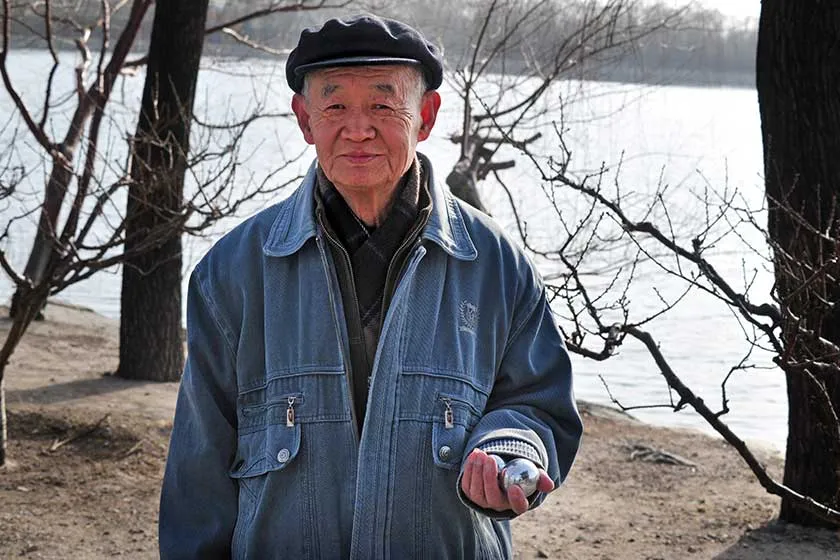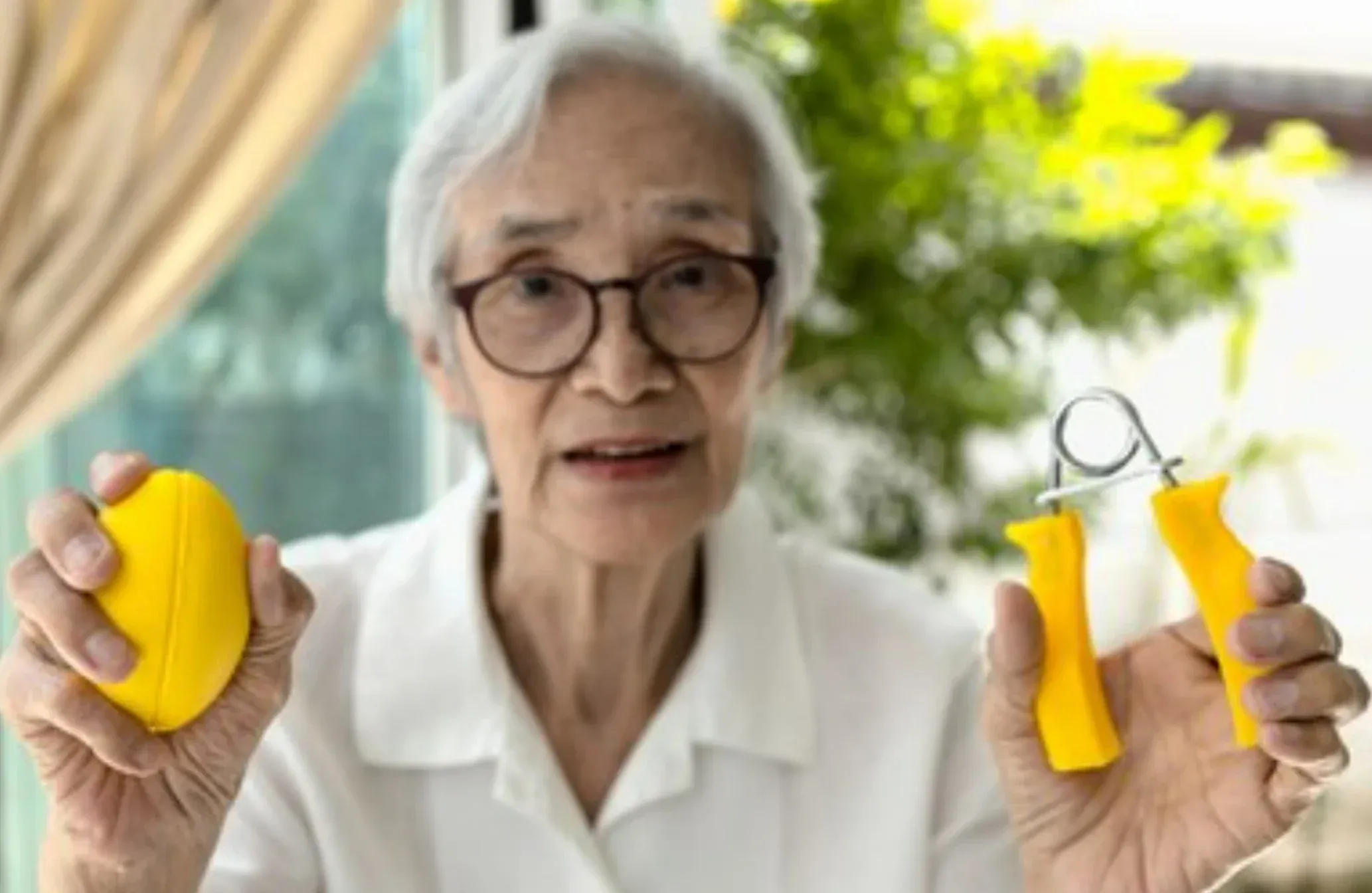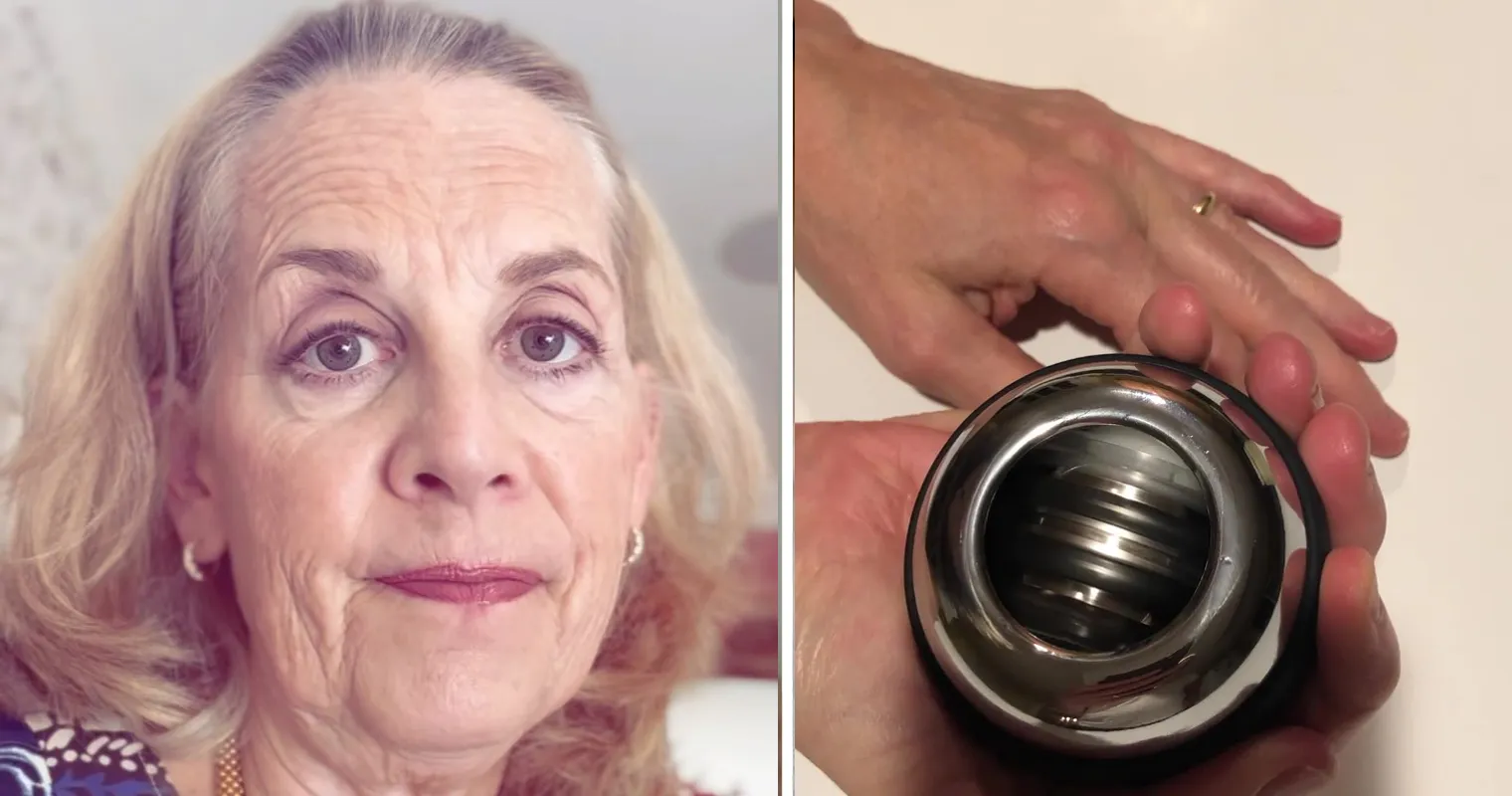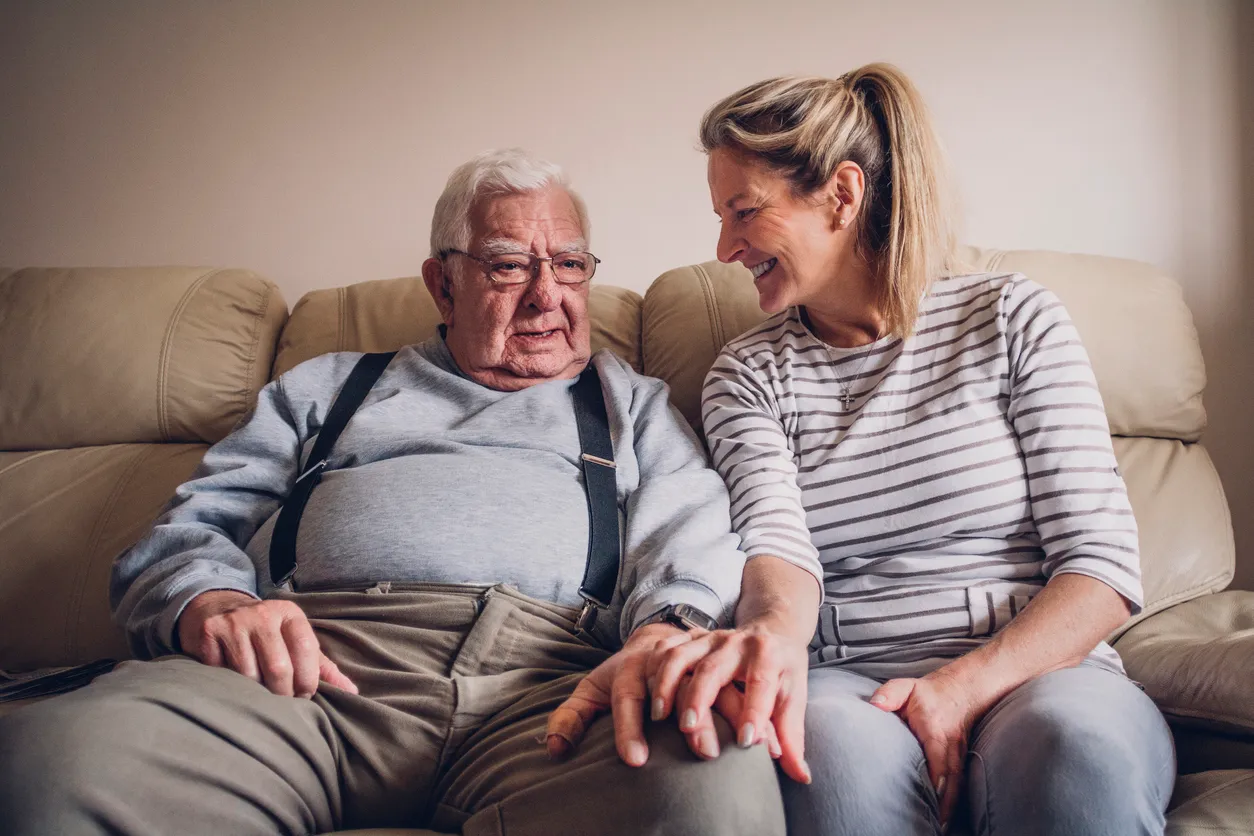How This Japanese Device Helped Our Family Postpone the Assisted Living Conversation
Why I Left Medicine to Create a Device That’s Helping Thousands Stay Independent at Home

I never intended to become an entrepreneur at 53.
For twenty years, I practiced geriatric medicine in Boston, watching the same heartbreaking pattern repeat itself:
Declining hand strength, a fall, then the swift transition to assisted living.
“It’s just part of aging,” my colleagues would say with resigned shrugs.
But when my father’s hands began to shake…
Fingers that had once built our family home from the foundation up now couldn’t twist a simple pill bottle cap.
The assisted living brochures were already on my sister’s kitchen counter.
As a physician, I was supposed to have answers. Solutions. But watching my father’s independence slip away, I felt utterly helpless.
I dove into research, desperate to find something—anything—that might help him.
That’s when I discovered a fascinating statistic: Japanese adults maintain independence an average of 9.4 years longer than Americans.
The medical journals all pointed to diet. Fish. Green tea. Seaweed.
But something about that explanation felt incomplete.
The Discovery That Changed Everything

With my father’s independence at stake, I secured a research grant and flew to Japan to find answers.
For days, I followed the same disappointing trail of fish diets and green tea rituals. The nutritionists all repeated the standard wisdom.
But science couldn’t explain why Japanese hands remained steady while American hands trembled.
Then I saw him.
In a quiet corner of a Kyoto community center sat an elderly man manipulating two metal spheres with the precision of a concert pianist.
I approached him. Through my translator, I learned he was 92 years old.
“Baoding balls,” he explained, offering them for me to examine. “I have used them every day for forty-three years.”
Later, the center director shared something remarkable.
Takeshi lived alone in a third-floor apartment. No elevator. No assistance. He prepared his own meals, maintained a garden, and taught calligraphy to children twice weekly.
“Has he always been this active?” I asked.
“Oh yes,” she nodded. “Many people here maintain their independence well into their 90s.”
The next day, I asked Takeshi about his hands.

“Strong hands, strong life,” he said, as if it were obvious.
As a physician, I knew hand strength is one of the most reliable predictors of overall health in aging adults.
But I’d always seen it as merely a symptom—not a cause.
What if hand strength wasn’t just a marker of good health, but a key contributor to independence?
I thought of my father. His carpenter’s hands now trembling traitors. The grandchildren he was afraid to hold.
Baoding balls worked—Takeshi was living proof. But they took years to master.
My father needed help now.
What if we could combine this ancient wisdom with modern technology? Could we accelerate the results?
That question transformed me overnight—from physician to inventor to reluctant entrepreneur.
Not for profit. Not for recognition.
But because I couldn’t bear the thought of my father losing his independence when the solution was literally in my hands.
That’s When I Created the Vital Wrist Ball
What if I told you the device that would change everything fits in the palm of your hand?
The first prototype looked ordinary. Just another exercise ball.
Then I pressed the power button.
Inside this unassuming ball is a precision gyroscope that creates resistance that actually learns from your hand.
Every time you use it, it maps your grip strength, finds the weak spots, and targets them precisely.
The small digital screen shows your rotation speed – your baseline score.
I didn’t realize then that this number would become the most watched metric in my father’s life.
A daily score that would tell the story of his hands coming back to life.
And all it took was 5 minutes a day.
My Father’s Journey Back to Independence
At 76, my father’s independence was slipping away, one tremor at a time.
When I brought him the Vital Wrist Ball, he eyed it with suspicion.
“Another gadget,” he said. “You think this toy will fix what doctors couldn’t?”
I asked him to try it for three weeks. Just 5 minutes each day.
His first session was heartbreaking. The ball nearly slipped from his grasp. His score: just 1,120.
“This is useless,” he muttered. But something in him – perhaps the craftsman who never abandoned a project – made him try again.
By week’s end, he called me.
“The number went up,” he said, surprise in his voice. His score had reached 1,895.
Week two brought steady gains. His voice carried a new emotion – curiosity.
“How high can the number go?” he wondered.
Then came the Sunday of week three.
I arrived for dinner and found the house strangely quiet.
“Where’s Dad?” I asked my mother.
She pointed toward the garage with an expression I hadn’t seen in years. Hope.
I found him at his workbench, sanding a wooden birdhouse, his hands steady.
Later, I checked his Vital Wrist Ball score: 8,954.
That number may not mean much to you. But to my father, it was the difference between dependency and dignity.
What Are The Other Features?

Your hand is an engineering marvel – 34 muscles, 29 joints, and over 123 ligaments all working in harmony.
Traditional exercises target just one or two muscle groups.
They’re like trying to tune a piano by pressing a single key.
Vital Wrist Ball creates “omnidirectional resistance.” Every muscle, every joint, every nerve pathway engages simultaneously.
here’s the real breakthrough.
Vital Wrist Ball doesn’t just work your muscles.
It retrains the connection between your brain and your hands. Tremors and weakness aren’t just about muscle strength. They’re about the signals your brain sends to your hands.
As we age, these signals get weaker.
More confused. Like a radio station losing clarity.
Vital Wrist Ball’s surface has thousands of tiny contact points that activate nerve receptors.
With every session, your brain forms new pathways to your hands. Clearer pathways. Stronger signals.
The result? Hands that respond exactly as you want them to.
But my father wasn’t the only success story…

After seeing my father’s transformation, I began offering Vital Wrist Ball to my patients.
Margaret Wilson was one of the first to try it.
At 79, Margaret had switched to pull-on clothes because she couldn’t manage buttons.
Her daughter was already looking at assisted living facilities.
“I felt like my independence was slipping away,” Margaret recalls.
Three weeks after starting Vital Wrist Ball, she called me in tears.
“I’m wearing my blue silk blouse with the pearl buttons,” she said. “I buttoned every single one myself.”
Richard, 83, feared holding his new great-grandchild.
Six weeks later, he sent a photo of himself cradling the baby.
His message: “No fear today. Thank you.”
From Medical Discovery to Your Hands

As word spread, my office phone started ringing.
“My sister told me about that ball thing you gave her.”
“My neighbor showed me her Vital Wrist Ball. Where can I get one?”
I wanted to help everyone who asked. How could I not after seeing what it did for my father and my patients?
But our manufacturing capacity is limited to 500 units monthly.
might sound like a lot. Until you consider there are over 54 million older adults in America alone.
Every 11 seconds, someone is treated in an emergency room for a fall. Many of these falls happen because of weak hands that can’t catch or stabilize the body.
We simply can’t make enough for everyone who needs one.
This led to a difficult decision. We had to create a fair system to distribute the limited supply.
Today, I’ve secured 200 Vital Wrist Balls from our latest production run especially for readers of this article.

A Simple Investment in Independence
When we were designing Vital Wrist Ball, our investors pushed for a premium price point.
“This is medical-grade technology,” they argued. “People will pay $300 or more.”
Similar devices in medical catalogs sell for $500+.
But I couldn’t stop thinking about all the people living on fixed incomes who desperately need this solution.
The average assisted living facility costs $4,500 per month. A single ER visit after a fall averages $3,500.
After many discussions, I’m proud to say we’ve made Vital Wrist Ball available for just $79.
That’s less than one physical therapy session.
Every Vital Wrist Ball comes with:
Many families ask about getting Vital Wrist Balls for parents, siblings, or spouses. That’s why we created our Family Package: order two or more and save 30% on each additional unit.
I believe independence isn’t a luxury. It’s a fundamental right that everyone deserves to maintain as long as possible.
That’s why I’ve made securing your Vital Wrist Ball as simple as clicking the button below.
A Personal Note

I never set out to create a commercial product.
For twenty years, I was just a doctor trying to help patients age with dignity.
Then I watched my father’s hands come back to life. Saw the joy in his eyes when he could once again do the things that made him feel like himself.
My father turns 80 next month. He still uses his Vital Wrist Ball while watching TV every evening.
Last weekend, he finished building a treehouse for my niece and nephew.
When I asked what Vital Wrist Ball meant to him, he thought for a moment.
“It’s not about the hands,” he said. “It’s about living on your own terms.”
That’s my wish for you or your loved one.
Because the best years shouldn’t be behind you. They should be right now.
NOTE: This product is NOT available on Amazon or eBay.











